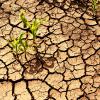
IIASA researchers contributed to the World Wide Fund for Nature (WWF)’s Living Planet Report 2022, which highlights the stark outlook of the state of nature and urgently warns governments, businesses, and the public to take transformative action to reverse the destruction of biodiversity.
With its biggest dataset yet, featuring almost 32,000 populations of 5,230 species, the Living Planet Index (LPI), provided within the report by the Zoological Society of London (ZSL), shows it is within tropical regions that monitored vertebrate wildlife populations are plummeting at a particularly staggering rate. Scientists are extremely concerned about this trend given that these geographical areas are some of the most biodiverse in the world. In particular, the LPI data reveals that between 1970 and 2018, monitored wildlife populations in Latin America and the Caribbean region have dropped by 94% on average.
IIASA contributed to the report by reviewing and providing a bird’s eye view on possible future scenarios as pictured in recent reports by the Intergovernmental Panel on Climate Change (IPCC) and the Intergovernmental Science-Policy Platform on Biodiversity and Ecosystem Services (IPBES), as well as ongoing models and scenario applications exploring desirable futures and ways to reach them.
“Models and scenarios are instrumental in demonstrating that only transformative change – deep, systemic changes in society tackling drivers of climate and biodiversity crises – will allow us to reach a nature-positive future,” says David Leclère, an IIASA researcher and one of the report’s authors. “Models and scenarios are now used to support national policy design and explore questions such as how to exploit synergies between action for climate and for biodiversity, and what a fair division of efforts across countries might look like,” he adds.
Commenting on the findings, Marco Lambertini, Director General of WWF International, said: “We face the double emergencies of human-induced climate change and biodiversity loss, threatening the wellbeing of current and future generations. WWF is extremely worried by this new data showing a devastating fall in wildlife populations, in particular in tropical regions that are home to some of the most biodiverse landscapes in the world.”
World leaders are due to meet at the 15th Conference of the Parties to the Convention of Biological Diversity (CBD COP15) this December for a once-in-a-decade opportunity to course-correct for the sake of people and the planet. The WWF is advocating for leaders to commit to a ‘Paris-style’ agreement capable of reversing biodiversity loss to secure a nature-positive world by 2030, while IIASA has provided crucial scientific evidence on possible pathways and actions compatible with desirable futures for biodiversity*.
The Living Planet Report also makes clear that delivering a nature-positive future will not be possible without recognizing and respecting the rights, governance, and conservation leadership of indigenous peoples and local communities around the world.
The report argues that increasing conservation and restoration efforts, producing and consuming food in particular more sustainably, and rapidly and deeply decarbonizing all sectors can mitigate the twin crises.
The authors call on policymakers to transform economies so that natural resources are properly valued.
Adapted from a press release prepared by WWF.
Further information:
The full Living Planet Report 2022 and summary versions of the report are available here.
* Integrated solutions for biodiversity
Bending the curve of terrestrial biodiversity needs an integrated strategy.
News

14 June 2024
IIASA Leadership visits Washington DC

05 June 2024
The 2024 State of CDR Report: Scaling up CO2 removal to meet Paris Targets

25 April 2024

